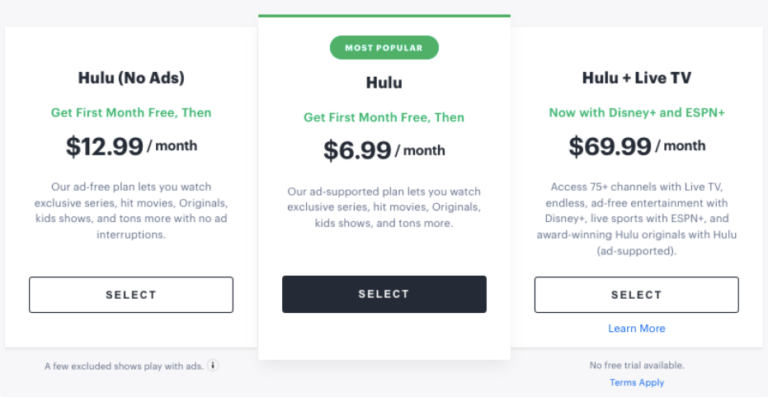Ads Are Coming To Netflix: What Does It Mean?

Tanel Vetik
Head of Strategy
This April, Microsoft strook a deal with Netflix, and the work on the integration of ads into the Netflix platform started. While Netflix has previously been adamant that ads will not be seen on their platform, this position has changed in the past turbulent months.



This is partly caused by the nearly 200,000 subscribers Netflix lost, but also by the change in the consumption habits of the target group towards faster and more entertaining content (TikTok, YouTube Shorts, reels, stories, etc.) and the success of competitors in bringing such packages into play. What does that mean for our small market, and what kinds of opportunities is that going to create for advertising in foreign markets?
Ads Are Coming To Netflix: What Does It Mean?



Tanel Vetik
Head of Strategy
This April, Microsoft strook a deal with Netflix, and the work on the integration of ads into the Netflix platform started. While Netflix has previously been adamant that ads will not be seen on their platform, this position has changed in the past turbulent months.
This is partly caused by the nearly 200,000 subscribers Netflix lost, but also by the change in the consumption habits of the target group towards faster and more entertaining content (TikTok, YouTube Shorts, reels, stories, etc.) and the success of competitors in bringing such packages into play. What does that mean for our small market, and what kinds of opportunities is that going to create for advertising in foreign markets?


This April, Microsoft strook a deal with Netflix, and the work on the integration of ads into the Netflix platform started. While Netflix has previously been adamant that ads will not be seen on their platform, this position has changed in the past turbulent months.



This is partly caused by the nearly 200,000 subscribers Netflix lost, but also by the change in the consumption habits of the target group towards faster and more entertaining content (TikTok, YouTube Shorts, reels, stories, etc.) and the success of competitors in bringing such packages into play. What does that mean for our small market, and what kinds of opportunities is that going to create for advertising in foreign markets?
What does that mean for the UK market?
Based on the latest data, Netflix plans to create a new subscription plan that includes advertising to viewers. It would have the lowest monthly fee, and all higher tier plans (including those currently in place) would remain ad-free. This means that while it would be possible to show ads on Netflix (Microsoft Ads would probably use a similar model on Netflix as Google Ads on YouTube), the maximum possible target audience would likely include 15–25% of Netflix users. At the same time, a large number of new subscribers are expected to join the new package. These assumptions will be tested after the package is launched in 2023.
We would probably reach a completely exclusive audience with Netflix ads (according to Netflix, the package would be targeted at a more price-sensitive customer who doesn’t mind watching ads). YouTube remains the most popular media platform in the UK. On the other hand, Netflix has the highest average time spent on platform per session. We still do not know what the exact frequency or the total length of the ads per hour will be, but it will certainly remain lower than what we see on the TV.
In terms of search engine popularity, Microsoft’s Bing holds 2.5% of users. Google attracts 95% of users, while Yahoo, Yandex, and DuckDuckGo share the remaining 2.5%. Microsoft Ads is a rather peripheral marketing tool in the UK market. We mainly use the Microsoft Ads environment to support Google Ads efforts.
Maybe Netflix ads would give Microsoft Ads the boost they need to increase their usage in the UK, but it could also happen that Netflix ads (as an advertising environment) would remain a purely supportive tool, similar to that of TikTok, Pinterest, Twitter, Snapchat, and many others today, which is the case for most businesses.
What Opportunities May Open Up For Export Marketing?
When looking at the global market, even though Netflix was one of the first video streaming platforms, by today, the landscape has become much more diverse, and Netflix has gained competitors such as Hulu, HBO Max, and Disney+.
They have already integrated ad solutions into their platforms; Netflix has been the odd one out so far. Hulu was the first to introduce an advertising system, and we are likely to see something similar on Netflix.












In terms of advertising in foreign markets, Netflix is not making a big change at the expense of advertising because these same opportunities already exist on other platforms. Only the potential target audience will grow, and the management of ads will probably become easier—we will be able to launch more campaigns on fewer platforms.
It is worth knowing that Hulu and Netflix users do not match, and that the consumer base varies from country to country. When you start developing an export marketing strategy, you need to look at your Google Ads, Facebook Ads, and influencer marketing, anything already in the works, and how these can all support each other in the big picture. Only then can we add secondary channels to enrich our conversion path.
Closing Observations
Watching Netflix on TV falls under OTT. Let’s look at the difference between OTT and CTV ads.
- OTT (Over The Top) ads mean showing ads on any digital content (streaming and video on demand) on different devices.
- CTV (Connected TV) ads refer to the consumption of online content on a TV. For example, if you use your TV to watch Apple TV, Netflix, Hulu, or Amazon Fire TV.
All ads placed on OTT content allow you to define your target audience and ad viewers in detail, compared to traditional TV or a TV channel, where the advert is seen by all viewers of a particular programme. The advantage of OTT content is that specific consumer profiles see the ads while watching the selected programmes (not one programme and all viewers, but the selected viewers and the selected programmes).
In addition, it is possible to collect data about your target audience, test against key performance indicators, and determine the success of your ads. Traditional TV advertising does not allow that, and with Netflix ads, we gain another entrance into the consumer’s living room or bedroom to show them relevant ads. But only if they agreed to that—we wouldn’t want to intrude.
Since Netflix chose Microsoft as its advertising partner, we would probably start seeing quite advanced ad formats, and interactive and AR/VR ads would not be excluded.
